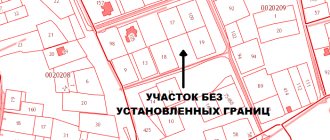How to determine the fee for an easement?
After all, the norms of the Civil Code of the Russian Federation and the Land Code of the Russian Federation do not contain specifics.
Temporary methodological recommendations for assessing proportionate fees for easements, approved by Roszemkadastr on March 17, 2004, which established proportionate fees for easements, did not undergo state registration with the Ministry of Justice and were not officially published in the prescribed manner. As a result, by the decision of the Supreme Court of the Russian Federation dated December 18, 2014 N AKPI14-1093, the mentioned Recommendations were declared invalid as of February 17, 2015.
In clause 2.1 of these Recommendations it was stated that the fee for the easement should be proportionate to the losses caused to the owner of the land plot or other real estate encumbered by the easement in connection with the restriction of his rights as a result of the establishment of the easement.
What documents are needed to calculate the cost of an easement?
We can estimate the value of an easement using just one of the documents listed below!
- Details of a legal entity or passport of the customer of the assessment.
For a plot of land
- Certificate of state registration of rights.
- The document providing the basis for the acquisition of the right to the plot specified in the certificate of registration of the right.*
- Cadastral passport or extract from the cadastral passport.
* This can be a purchase and sale agreement, an agreement on the division of a plot of land, a gift agreement, etc.
Per building/premises
- Certificate of state registration of rights.
- The document providing the basis for acquiring the right to the object specified in the certificate of registration of the right.**
- Technical passport (or extract from the technical passport) of the BTI, including an explanation and a floor plan.
** This can be a purchase and sale agreement, a construction agreement, an act of completion of construction and commissioning, etc.
To determine the value of the easement, it is enough to provide regular copies of documents or send scanned pages by email.
Still have questions? Contact us!
Amount of fee for easement in judicial practice
Currently, the issue of determining an adequate fee for an easement is decided by the courts based on the general “wishes” of higher courts.
For example, in paragraph 12 of the “Review of judicial practice in cases of establishing an easement on a land plot”; approved by the Presidium of the Supreme Court of the Russian Federation on April 26, 2017, the following is indicated:
“..The payment for the easement is determined by the court based on the principles of reasonableness and proportionality, taking into account the nature of the parties’ activities, the area and the period for establishing the easement, and can take the form of either a one-time payment or periodic payments.
The amount of payment for the easement must be proportionate to the material benefit that the owner of the land plot acquires as a result of the establishment of the easement, compensating for the restrictions that the owner of the land plot burdened with the easement undergoes.
The amount of the fee includes reasonable costs incurred by the owner of the property in connection with the restriction of his property rights or the creation of conditions for the implementation by the owner of the property, to ensure the use of which the easement has been established, of limited use rights (for example, related to the need to organize passage through the land owned by the owner site, demolition or relocation of fences, in compliance with the access regime, maintaining part of the site in proper condition), as well as those arising in connection with the termination of existing obligations of the owner of the site, encumbered by the easement, to third parties.
In this case, it is also necessary to take into account the share of the land plot limited by the easement in the total area of the land plot; term for establishing the easement; the scope of restrictions on the use of the land plot and the intensity of its intended use; the nature of the inconvenience experienced by the owner of the real estate encumbered by the easement; the degree of influence of the easement on the possibility of disposing of the land plot.
When deciding on the nature of the payment for the easement (a one-time payment in full or periodic payments throughout the entire term of the easement), in order to best maintain the balance of interests of the plaintiff and the defendant, it is necessary to take into account not only the content of the claims stated by the plaintiff, but also the specific conditions and volume easement."
Previously, for example, in the ruling dated June 11, 2015 in case No. 301-ES14-9021, A43-11824/2013, the Supreme Court of the Russian Federation indicated that upon a new consideration of the case, the court should formulate the amount of payment for the easement in accordance with the provisions of paragraph 5 of Art. 274 of the Civil Code of the Russian Federation, as well as taking into account:
— the period and area for establishing the easement; — the nature and intensity of use of the land plot by the owner; — conclusions about the amount of actual damage caused to the owner of the land plot; — the period of establishment of the easement specified in the repeated forensic examination.
What is an easement and its types
It is a special form of use of real estate, which is established in order to ensure the normalization of the living conditions of a person who owns areas whose location is significantly worse than adjacent plots. The restriction applies to part of the area for the possibility of use by the interested entity. Such actions are provided for in Art. 23 of the Land Code of the Russian Federation. The limit can be set:
- By agreement of the participants - when both parties are satisfied with the established conditions for the use of land;
- By court decision - determined when one of the participants appeals due to objections to the proposed conditions;
- In the manner determined by regulatory enactments, the need to use the territory by the municipality and other government agencies and institutions.
In fact, this means that the owner of the plot accepts restrictions on the use of part of his personal property in favor of another landowner. He can do this voluntarily if there are the following reasons:
- Another subject is forced to use his land by external reasons;
- The damage from the established restrictions is insignificant for the owner;
- A certain amount of money is transferred to the owner to pay off the obligations.
With the signing of the agreement or delivery of the relevant court order, the applicant is the owner of the easement. At the same time, he gets the opportunity to use part of someone else’s property; any other property claims cannot be considered.
There are two types of easements:
- Private. Restrictions are applied if adjacent landowners are interested in the normal use of land real estate;
- Public. They are established by the state in order to normalize the living conditions of the population of the municipality.
Litigation regarding termination of easement
Often citizens have to prove their rights to full use of a land plot without restrictions by appealing to the judicial authorities. To do this, you must have with you exactly the same list of documents as when contacting local government representatives.
At the same time, the application states on what basis the competent and responsible authorities did not issue the corresponding act, that is, in addition to the documents, a corresponding refusal must be attached.
The validity of the refusal to terminate the easement is considered by the magistrates' courts, and in cases where one of the parties does not agree with the decision made, then by the higher courts. As a rule, if there are no grounds for continuing to use someone else’s land, then the municipality does not insist on such a right.
A citizen whose property has been damaged may file a lawsuit against local authorities for compensation for material and moral damage. The court, having assessed the damage caused, has the right to satisfy the claim in whole or in part.
Moreover, the court may offer the parties a solution in the form of purchase and sale of the owner’s land by the municipality. In this case, the final decision will remain with the owner, who has the right to accept such conditions or to continue to insist on compensation for damage in monetary terms while preserving the property.
Author of the article
Concepts of private and public easements
A public easement, according to the current norms of land law, is established only during public hearings. A limited right to use land for the needs of a municipality, state or society is established on some of the following grounds:
- when carrying out drainage work on a given plot of land;
- when installing road signs, geodetic signs, free access to them;
- when repairing road surfaces or utilities and other communications;
- for hunting, fishing;
- for driving farm animals through the site in the absence of a workaround.
A full list of grounds for the emergence of a public easement can be read in Article 23 of the current Land Code of the Russian Federation.
A private easement, as a limited right to use land, arises when the owner of one plot of land claims to use part of a neighboring plot of land. Such legal claims are most common in rural areas, where private households are located next to each other in such a way that some neighbors sooner or later have to cross or partially use the land of other neighbors.
The owner whose plot of land was assigned rights under the easement has the right to demand material compensation (payment) for the use of his property. However, this does not mean that such payment will be given to him, since limited rights to use the land are most often established during litigation.
In addition, some grounds do not involve the payment of funds. For example, the provision of communication networks to neighbors, in cases where there is no other option for performing the work, is unlikely to be paid for.
Termination of an easement of any type is impossible upon the application of the person in whose favor it was established, that is, the owner of a land plot on which restrictive rights were imposed cannot independently demand the cancellation of such a restriction.
Grounds for termination of a private easement
Termination of a private easement is possible, according to the law, for several reasons:
- The person in whose favor the act was drawn up renounced his rights to use someone else's land.
- The grounds for using someone else's land for certain work have ended. For example, all communications had already been established, and the need for passage and sale of foreign land was no longer necessary.
- The impossibility of using one’s right to an easement on someone else’s plot of land. Most often, this happens in cases where, when laying an electrical network through a neighboring area, certain situations arise in which performing the above actions becomes impossible. In this case, the termination of the easement occurs as if automatically. This does not mean that it is necessary to obtain a corresponding act on the abolition of the right to limited use of someone else’s property.
There are not so many ways to terminate rights to limited use of land; they are all stipulated in land law, so they are most often interpreted correctly even by citizens without a legal education.
Execution of termination of an easement, methods of its termination
Since land relations are regulated not only by the Land Code of the Russian Federation, but also by the Civil Code, the latter quite clearly states how exactly the termination of an easement occurs. Thus, Article 276 of the current Civil Code of the Russian Federation states that the termination of the right to limited use of land occurs after the termination of the grounds for this right.
To obtain the appropriate act, you must apply to the court with a corresponding application or contact the local administration (department of land and property relations).
In cases where representatives of local authorities did not take any action to terminate the easement and did not issue the corresponding act, then an appeal to the judicial authorities cannot be avoided.







